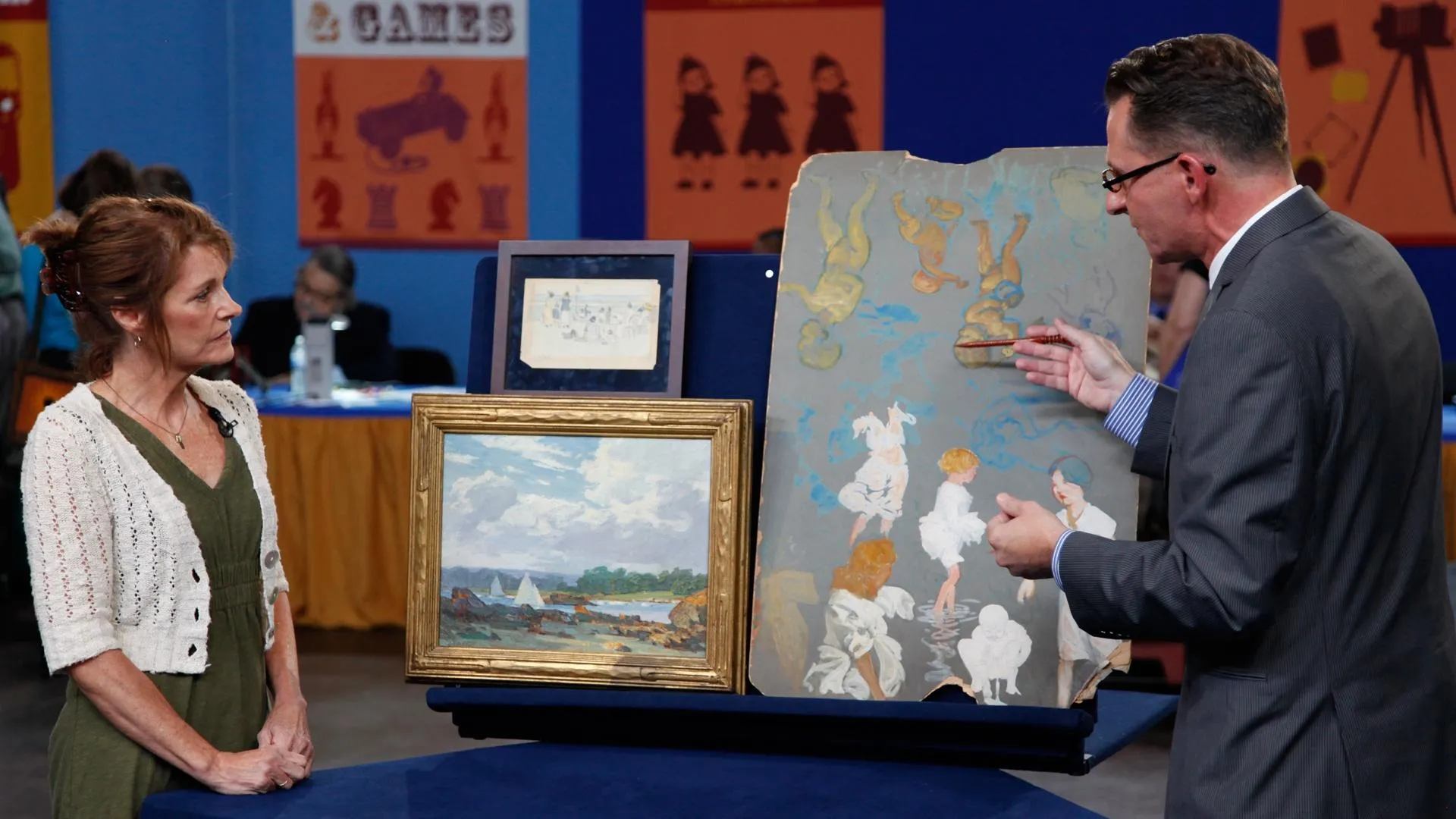GUEST: We inherited this watch from my mother-in-law. My mother-in-law's family has been in Cincinnati for seven or eight generations. She was somewhat of the family packrat. We assume it's been in the family a long time. It's a piece my husband would see now and again in her dresser drawer throughout his entire life.
APPRAISER: The watch is called an automaton repeater.
GUEST: Okay.
APPRAISER: It's made of 18-karat gold. It was made in Geneva by Charles Ducommun somewhere between the years 1790 and 1810.
GUEST: Oh wow, my goodness.
APPRAISER: The watch has what's called a bull's-eye crystal, so it magnifies a little. It has a porcelain dial. And the entire movement is skeletonized. So you see into it, and you can see that the plate-- which is the part of the movement where the gears are-- has all been engraved. Now, from the back, this is an engine-turned case. And it's all 18-karat gold. Now, this is where the key would go. And this is called the inside cuvette. The watch is in near-mint condition. I assume you have no idea how it rings bells.
GUEST: No.
APPRAISER: On the stem of the watch, it depresses.
GUEST: Okay.
APPRAISER: So this section here will plunge down. It's called a plunge repeater. (bell chiming)
GUEST: Oh, my goodness.
APPRAISER: Can you hear it?
GUEST: Yes! (bell chiming) I had no idea if anything... any part of it still worked.
APPRAISER: It's actually working completely.
GUEST: Oh, my goodness.
APPRAISER: So it's a quarter-hour repeater, so it rings in a succession of dings for the hour. And then it'll stop for a brief second or so, and then it'll ring in another succession for the quarter hours. I mean, these watches were made to certainly do more than tell time. They were made to impress. The watch would probably be, on a retail level, somewhere in the $8,000 to $9,000 price range.
GUEST: That's a surprise. (laughing) Exciting. Well, I just love it because it's beautiful.



